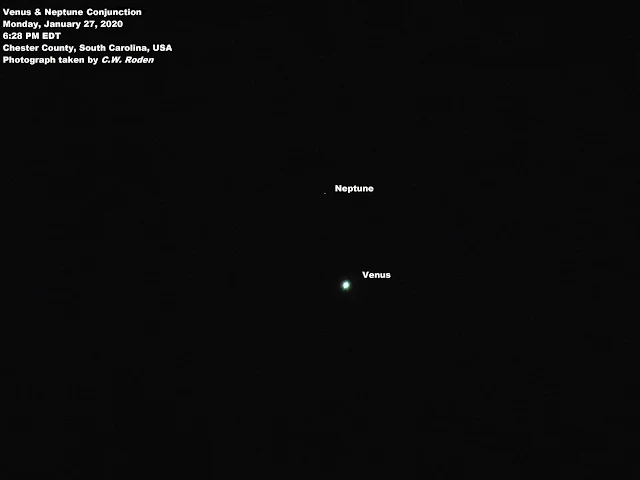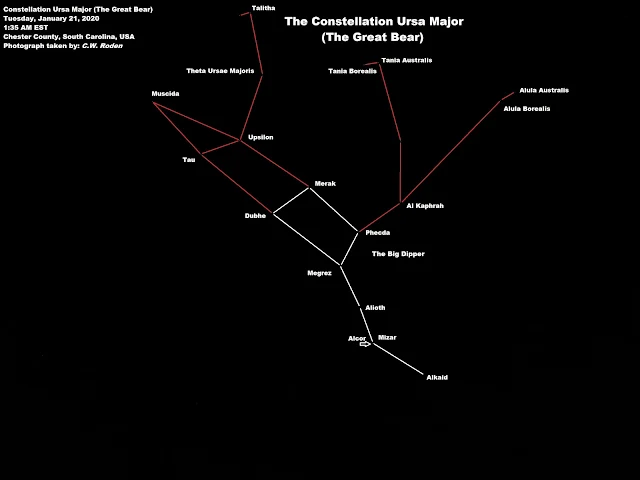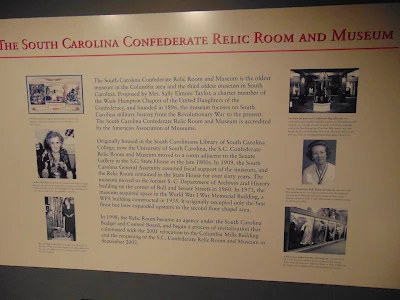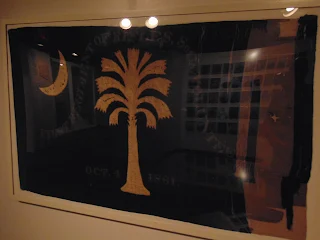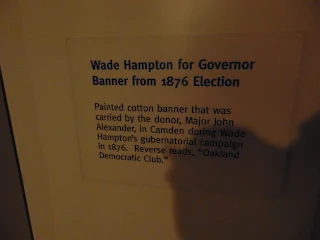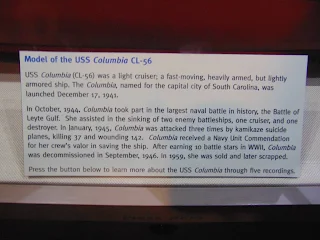Good evening fellow stargazers!
This evening I have a real treat for y'all, photos taken by this blogger of the closest planetary conjunction of the year between two planets that are quite far apart in terms of actual orbital distance -- Venus and Neptune.
Venus is the brightest object in the night sky over the Carolinas in the early evenings in late January this year.
Neptune is officially one of the farthest major planets in our solar system, other than distant Pluto....
 |
| And don't you forget it! |
Anyhow, despite being a whopping 17 times the mass of our Earth, at a distance of 2.7 billion miles at our closest orbital approach, the gas giant Neptune appears in the night sky some six times fainter than the dimmest star in our night sky that is visible to the naked eye.
However, if you know where to look just after sunset, amateur astronomers like myself can find Neptune with small telescopes, a really good pair of binoculars, or some other optical aid.
In their conjunction, Venus and Neptune will be spaced only 1/12th of a degree apart from our perspective. For a reference, the angular diameter of the moon spans about 1/2 degree, which is some six times greater than the tiny gap between Venus and Neptune.Venus also outshines Neptune by about 60,000 times in brightness.
This evening, despite rain earlier in the day, I was blessed with mostly clear skies in order to capture my shots of the conjunction.
The first shot I took about 40 minutes after sunset using a local baseball field as foreground. You see see our beautiful young crescent moon just beneath bright Venus in the western sky. Unfortunately the trees blocked my view of tiny Mercury lower on the horizon following the setting sun.
My second shot was a close-up of Luna and Venus. Just barely visible as a faint ghost just above Venus is Neptune.
In my third shot, I adjusted the light filter settings on my trusty Sony DSC-H300 camera and was able to beautifully capture distant Neptune in conjunction with bright Venus. Even at maximum zoom on my 35X Optical Zoom lens, Neptune still appears quite faint in the shot.
My forth shot I took of the clouds threatening to block my shot of Luna and Venus. I just thought the shot of the clouds getting between the two heavenly bodies made for a very pretty photo.
While I was there, I turned my tripod and camera eastward and managed to capture a really good shot just above the trees of several of the major winter constellations and the Winter Triangle once again. Included are the constellations Orion the Hunter, Canis Minor the Lesser Dog, Leups the Hare, part of Taurus the Bull, and Eridanus the River. The bright star Sirius was just visible above the tree line, but the rest of the constellation Canis Major alas was not. Sirius combined with the stars Betelguese and Procyon make up the Winter Triangle.
Well folks, I hope y'all enjoyed my photos. Be sure to let me know what you think in the comments below.
Have a wonderful Dixie evening and as always, keep your eyes to the night skies, y'all!


